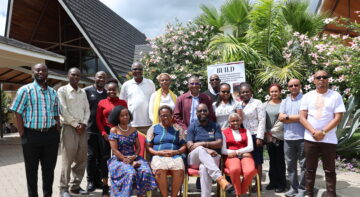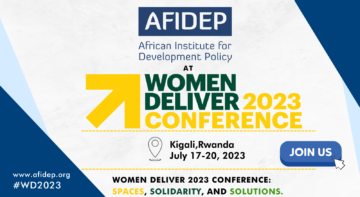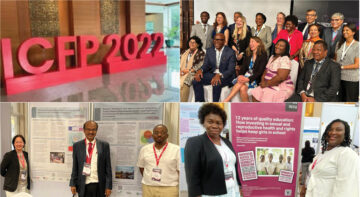Blogs

Kenya provides a very good example of why issues to do with family planning and reproductive health require sustained commitment, accountability, and investment.
Alongside Zimbabwe and Botswana, Kenya pioneered fertility transition in sub-Saharan Africa in the late 1980s, a feat that many experts thought would not happen so soon in the region.
The “unexpected” transition was a result of a concerted effort that the Kenyan government made to tackle population issues in the 1980s. These efforts were propelled by a strong community-based contraceptives distribution campaign, a massive educational campaign on reproductive matters, and a national population conference organised by the National Coordinating Agency for Population and Development (NCAPD), the Kenyan government’s coordinating body on issues related to population and family planning.
The resulting renewed attention to family planning and population growth had a dramatic, ten-year impact on the national fertility levels, contraceptive prevalence, and unmet need for family planning.
Between 1989 and 2008, the Total Fertility Rate (TFR – average number of children per women) in Kenya decreased from 6.7 to 4.7, and the Contraceptive Prevalence Rate (CPR – percentage of married women using contraception) improved from 17% to 32% between 1989 and 1998.
However, due to reduced funding of population and reproductive health programs (as a result of diversion of funding to HIV/AIDS and the effect of the Bush Global Gag Rule effected in January 2001) and the decline in family planning program effort (especially the community-based program), contraceptive use and fertility decline stalled in Kenya.
No significant change in TFR was seen between 1998 and 2008, and CPR also stayed constant between 1998 and 2003. Meanwhile, the unmet need for family planning in Kenya remains high and was quite possibly on the rise between 1998 and 2008.
Kenya’s stalled progress in meeting reproductive health needs of women between 1998 and 2008 came alongside slow reductions in infant and child mortality, high maternal mortality, and limited improvement in maternal health services.
In light of these worrying trends, and two decades after its previous national conference, the NCAPD held the National Leaders’ Conference on Population and Development in November 2010.
The goal of the meeting was to reposition family planning programs and address broader population issues in Kenya. The conference brought together policy-makers, donor agency representatives, and international experts in population and development.
The conference sessions were structured around a core set of fourteen sub-themes. These themes ranged from health to education to science and technology, and sessions were focused on re-framing population within the context of achieving development goals of Vision 2030 and the Millennium Development Goals ( more information can be found at www.kenyapopconference.org or at www.ncapd-ke.org ).
The conference, which was opened by Kenya’s Vice president, Hon. Kalonzo Musyoka, was very well attended and involved open, serious discussions of challenges to and opportunities for revitalising Kenya’s population programme.
The fact that the conference took place at a time when the world is witnessing a “rebirth” of the emphasis of the role of family planning in promoting maternal and child health, family wellbeing, and development in general will undoubtedly help the country’s efforts to regain its leadership role in fulfilling women’s reproductive needs and rights.
Whether the country succeeds in revitalising its population program will obviously depend on what actions are taken to operationalise and implement the elaborate recommendations that came out of the conference.
In this regard, it is encouraging to note that the recommendations from the conference will feed into and guide the formulation of the new National Population Policy and Plan of Action.
Beyond that, success will be measured by how well the country moves towards demonstrating sustained accountability to its commitments and obligations by providing the resources and enabling program environment required to overcome the supply and demand side barriers to family planning and other reproductive health services.
This cautionary observation was highlighted in a presentation that Dr Eliya Zulu, AFIDEP’s Executive Director, made during a special session at the conference that the government organised with representatives of donor agencies to seek their support in revitalizing the country’s family planning and population program.
The session was chaired by Dr Edward Sambili, the Permanent Secretary of the Ministry of State for Planning National Development & Vision 2030.
Dr Edward Sambili underscored the need to reposition family planning for the sake of national economic prosperity, saying that the “population is increasing at a traumatic pace.”
Zulu noted a good starting point for Kenya would be going back to the basics that established it as a leader in addressing population issues, such as strengthening its community-based distribution program, which was seen as model program in the late 1890s and 1990s but has now been largely dilapidated.
In exploring ways to strengthen this programme, Zulu recommended that Kenya could a learn a bit from Ethiopia, which has deployed over 30,000 governmentally employed community health workers to administer primary health care services, including family planning, in each of the country’s villages.
Zulu also called upon Kenya’s government and its development partners to adopt a socio-developmental approach in revitalising and accelerating its demographic transition so that the country is able to take advantage of the demographic bonus that will accrue from sustained reductions in fertility and mortality.
These changes result in transformation of the age structure shift from one dominated by young people to one dominated by working-age people. In order for the country to maximize economic benefits from the demographic bonus it must simultaneously invest in health and work towards universal secondary education in order to develop the quality human capital that it needs to achieve its central Vision 2030 goal of being a middle-income country.
During the same session, the Executive Director of NCAPD (Dr Boniface K’oyugi) noted that Kenya’s population program had a serious commodity security problem and insufficient resources to implement district-level plans for community-based distribution programs and the hiring of personnel, including community health workers.
His points underscore the need for intelligent public investment to overcome the both the commodity-related and psychosocial barriers to meeting the unmet need for contraceptives in Kenya.
Dr K’oyugi also went on to say that this investment must occur in conjunction with increased funding for family planning counseling, rural economic development strategies, and social programs that target vulnerable groups.
Another panellist at the special session was Dr Collins Opiyo, Director of Population and Social Statistics at the Kenya National Bureau of Statistics, who presented highlights of the findings from the 2008 DHS and 2009 Census.
Dr Opiyo noted that Kenya’s total population, which was 38,610,097 in 2009 and growing by more than 1,000,000 people yearly, was a key barrier to the country’s development efforts.
He noted that “these numbers portend great challenges in development planning” and in achieving Kenya’s Vision 2030 goals.
Related Posts





